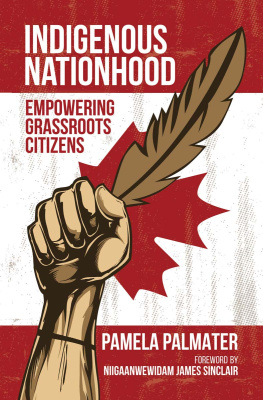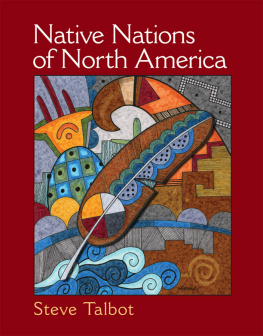Introduction
Troubled was a word often used to describe Kashechewan by the time I became aware of it. That was in October 2005. Back then I was working for the CBC as a producer on various current affairs shows in radio and television, and like many of its employees, moving between contracts. It was a piecemeal existence, with long hours and little stability, but one advantage was that I got to explore where my own curiosity took me, whether it was indigenous rights or near-death experiences. I thought of my job as a paid investigator through the terrain of news and ideas, eager to uncover those hidden conflicts and stories that propelled the news forward. I had planned to apply this same principle to Kashechewan but it was impossible, at least from Toronto. For when I went to research the reserve in my books on indigenous history, there was almost nothing there. One of the books the Handbook of North American Indians , Volume VI mentioned that it had some of the things that we normally associate with northern communities a Hudsons Bay store and a local elementary school but that was about it. It was as if the reserve had previously existed in a void, and had emerged from the silence of nothingness to full-blown crisis.
When I finally arrived in Kashechewan, or Kash as locals call it, five years later, I found that wasnt it, not at all, there was a lot more to it than meets the eye. I suppose thats true of any place; life is always fuller than whats written down on the page. But Kashechewan had a number of characteristics that silenced its stories. It was more than 1,000 kilometres away from Toronto, and the only way in was by plane. It had no cell phone service, and the Internet was often down. Few people listed themselves in the phone book. And it was on a First Nation reserve, which meant that it was difficult for its leaders to publicize what was really happening. Thats not an isolated incident its true of many Aboriginal communities. Over the centuries there have been many Native leaders, such as Joseph Onasakenrat, Frederick Ogilvie Loft, and Bernard Ominayak, who have brought their concerns to Ottawa only to find themselves ignored or silenced. Why we now know about them, why their stories are recorded in the history books at all, is that they went to inordinate measures for their causes.
Kashechewan too was overlooked; at least, until something extreme happened there. The E. coli crisis put it on the map in October of 2005. It was one of those stories that built slowly, but then was everywhere in the national media, the international press. Even then Prime Minister Paul Martin was involved.
It might not have generated all the attention had it not been for another water debacle that had happened five years earlier: the Walkerton crisis. Seven people had died and twenty-five hundred had become ill because they had drunk water contaminated with E. coli, even as those responsible, utilities manager Stan Koebel and water foreman Frank Koebel, denied there was anything wrong and told the public that the water was safe to drink. Both would eventually plead guilty to a charge of common nuisance through a plea bargain. Many felt the sentences one year in jail for Stan and nine months of house arrest for Frank were a little lenient, especially as they admitted to falsifying reports and Frank admitted to drinking on the job and having a beer fridge at the facility.
That incident drew attention to the water crisis in First Nations communities. Here we were in a country with 60 percent of the worlds lakes, with one-fifth of the worlds fresh water, and still there were an estimated seventy-five thousand people without fresh drinking water. We were, and still are, a country that has a special Disaster Assistance Response Team (DART) that can fly anywhere in the world and produce clean HO out of the worlds filthiest sludge. But these capabilities have not translated to action: whats a crisis elsewhere is normalized within our own borders, and DART specializes in foreign deployments rather than fixing the same issue at home.
Kashechewans water crisis, coming on the heels of the previous one in Walkerton, highlighted the difference between how water safety is handled on- and off-reserve. In the rest of Ontario, the Walkerton crisis spurred the passage of the Safe Drinking Water Act, which demanded better training, plant operator licensing, frequent checks of the system, and fines for those who did not comply. But for First Nations communities, water is not a provincial responsibility, but a federal one, and the provincial legislation was not implemented, nor were comparable federal regulations and systems.
Beyond water, the crisis gave the community a reputation. Around the world, it became symbolic of a larger problem. The American media spoke of its Third World conditions, saying that its infrastructure was poorly built and continued to worsen. The shoddy buildings, failing water, and unpaved roads had come about because we as a nation had failed to uphold basic human rights, No longer just an issue of bad water, Kashechewan became totemic of the governments failure to address the problems faced by First Nations reserves across the country.
Kashechewans population is a mere 1,800 people; that, combined with its remote location and lack of supports, ensured its citizens were ill-prepared to deal with the attention. A third-grade teacher, a graduate of Nipissing Universitys Teachers College in North Bay, who was originally from Guelph, had gone there and found it difficult to cope with her four-month stint in the town. She wrote about her experience for the National Post in an article titled All the lost boys and girls, dated November 19, 2005. It wasnt just one incident and these things rarely are but the event that most disturbed happened in her own classroom. While at the white board, some students began to throw dead rats and mice at her. Afterwards, the students did not settle down as the teacher pleaded, and instead chopped off her hair. The teacher later wrote that she had been unable to move on, and from the tone of the article, she still harboured resentment.
The crises continued, as did the media coverage. Take the prison fire in January 2006 where two men died. They died because the jail was badly run: it lacked fire extinguishers, smoke alarms, and sprinklers. Guards heard Ricardo Wesley, twenty-two, and Jamie Goodwin, twenty, shouting Emergency! Emergency! as the foam mattress on the floor of their cell became engulfed in smoke and flames. Meanwhile, prison guards fumbled with unlabelled keys.
Afterwards, there was an inquest to examine just what had gone wrong. First, there was the issue of the fire department. There wasnt one. Kashechewan didnt have any firefighters, fire trucks, or hoses. With every electrical fault or errant lit cigarette everything could be lost in a night of flames. And the jail was falling apart. That was the conclusion of the 2009 inquest. That wasnt news to the band council, who had written to Ottawa several times complaining that its jail was beyond repair. Outside experts had agreed. Five years before the fire, there had been a report prepared by the Real Property Consulting Group for Public Works and Government Services Canada, which found that the conditions of the Kashechewan detachment were very poor, and recommended the jail be demolished and rebuilt.
The inquest had examined the morale and capabilities of the staff. They were demoralized. Some police officers needed to be mentored, according to Wesley Luloff, from Long Lake First Nation at Longlac, and a twenty-three-year veteran with the RCMP, who had left to become a staff sergeant with Nishnawbe-Aski Police (NAPs) in 1994. They had no one to train them. At the time of the blaze, Kashs NAPs was staffed entirely by local officers. It had been like that since 1994, part of the national push towards Native sovereignty, a historic movement that had been slowly gaining ground since the Red Power movement in the 60s. It had been an important victory for generations of Native activists, a way of solidifying the relationship between locals and police.










